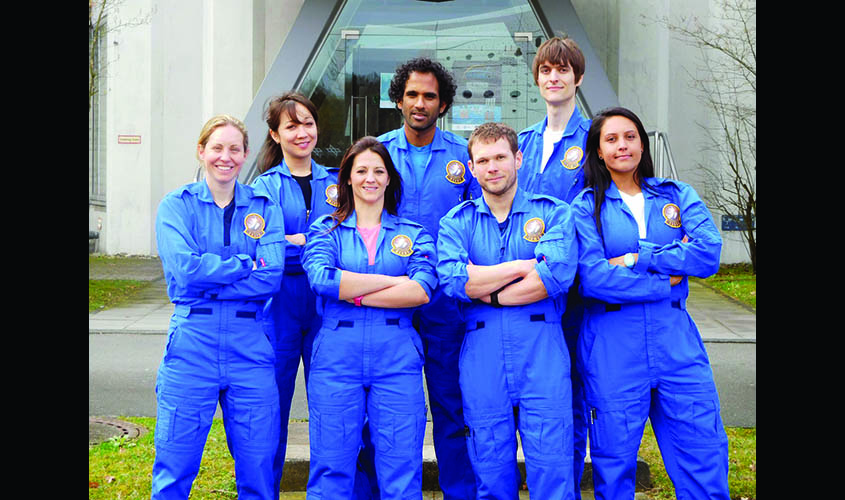In November 2016 when aerospace engineer and Canadian Arctic explorer Vijay Shah came across a BBC post on Twitter, looking for participants to enter an astronaut training and selection programme run by his hero Chris Hadfield, three times an astronaut and a 20-year veteran of NASA, there was no holding him back. Shah had dreamt of being in orbit since he was old enough to think, he never dared hope that someone from his east London background would make it into space.
Up to three thousand hopefuls may have applied; the selection team was Hadfield, Kevin Fong- trauma specialist interested in space medicine and the physiological challenges of long duration human space missions and Dr Iya Whiteley- clinical psychologist and Director of the Centre for Space Medicine at Mullard Space Science Laboratory, University College London. After a rigorous pre-selection of written applications, telephone interviews, skype interviews and submission of home videos, a few were chosen for the final assessments of a medical exam, fitness, psychometric tests and an on-camera interview. In March an elite group of twelve were chosen to proceed to the first of six BBC2 episodes of “Astronauts- Do you have what it takes?”, including an ecstatic Shah.
Shah, a charming and modest 35year old, is passionate about space flight and thermodynamic technology; he graduated from Loughborough University (originally an aeronautical engineering college) and is now part of the team at Reaction Engines pioneering a new synergetic air-breathing rocket engine. This SABREtm engine could power a whole new class of vehicles for hypersonic travel (imagine London to Sydney in 4hours) or to orbit space in a single stage. At the moment, the only way to the International Space Station (ISS) is by the magnificent Russian Soyuz rocket, the most successful human space craft ever, the SABRE engine could eventually change this.
Working with Hadfield, who recorded David Bowie’ Space Oddity from the ISS in 2013, is Shah’s dream come true. Shah’s preferred test involved operating the simulator, under the direction of Hadfield, to dock the Soyuz onto the ISS. Other tests have included physical fitness, endurance swimming, escaping from a crashed spacecraft in water, endurance inside simulated claustrophobic capsules (meditation was practised within), remotely operating a solar powered Rover called Bridget in a make-believe Mars cave and folding origami birds (part of selection for Japanese astronauts). All except the last two were accomplished easily by Shah, he says he did not yet have the necessary gaming skills to fathom the time lag between the Rover control’s signal and Bridget’s delayed reaction (this test replicated the conditions for a human operating a rover on the surface of Mars whilst in orbit around Mars). To overcome his origami block Shah then composed 200 perfect origami cranes for his June wedding. Shah is inspired by the other wannabe astronauts, since the end of filming they have met up in less stressful circumstances; so far Shah has survived all the tests without elimination, there are only six wannabes left. The winner gets the ultimate reference from Chris Hadfield for the next round of European Space Agency astronaut selections, which happen only once every 10-15 years.

